#the empires of luxor city
Text

I was so in love with this place 🖤 totally gave me Dom’s dockside HQ vibes I’m obsessed~
3 notes
·
View notes
Text
WE HAVE A RELEASE DAY ~ SEPTEMBER 5TH
My next story set in the @the-empires-of-luxor-city universe is BORDERS BETWEEN EMPIRES. Like the THE EMPIRES OF LUXOR CITY and BETWEEN EMPIRES AND CONTINENTS it’ll be a stand alone story set in the same universe with some new characters and a few familiar faces! You don't have to read them first BUT I'll love you if you do <3

Detective Hanni Nassar finds himself in enemy territory while investigating a string of robberies. After accidentally crossing the Central Empire’s borderline, he comes face to face with Jaemin Yi, a high-ranking Alpha of the Southern Empire’s Elite.
A cop and a gangster, both Hanni and Jaemin are suspicious of each other at first. Jaemin wants to know what Hanni’s doing on Southern turf, and Hanni wants to know if Jaemin’s notorious boss has any involvement with his case. Their initial meeting is tense, but soon Jaemin starts pursuing him for his own dissolute reasons.
Despite the clandestine rumblings through the streets of Luxor City, this isn’t about a case anymore.
Jaemin Yi is persistent. He thaws Hanni’s frigid airs and shows him there’s nothing wrong with caving to his more primal desires once in a while. As an Omega working in an Alpha-dominated field, Hanni has buried the Omegan side of himself, and Jaemin seems keen to draw it to the surface.
But where did his sudden interest come from? And will the lines crossed be too much for Hanni to handle or will adversarial passions heat up the borders between Empires?
#writing#publishing#novel#bl novel#mm romance#I am excited~#the empires of luxor city#borders between empires#let's gooooo
4 notes
·
View notes
Text

Saint Maurice (also Moritz, Morris, or Mauritius; Coptic: Ⲁⲃⲃⲁ Ⲙⲱⲣⲓⲥ) was an Egyptian military leader who headed the legendary Theban Legion of Rome in the 3rd century, and is one of the favorite and most widely venerated saints of that martyred group. He is the patron saint of several professions, locales, and kingdoms.
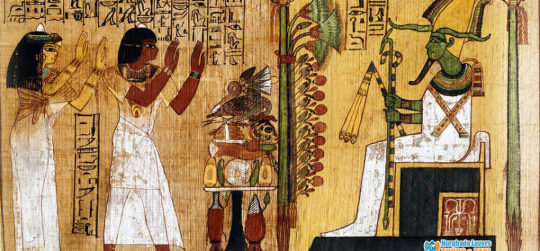
According to the hagiographical material, Maurice was an Egyptian, born in AD 250 in Thebes, an ancient city in Upper Egypt that was the capital of the New Kingdom of Egypt (1575-1069 BC). He was brought up in the region of Thebes (Luxor).
Maurice became a soldier in the Roman army. He rose through the ranks until he became the commander of the Theban legion, thus leading approximately a thousand men. He was an acknowledged Christian at a time when early Christianity was considered to be a threat to the Roman Empire. Yet, he moved easily within the pagan society of his day.
The legion, entirely composed of Christians, had been called from Thebes in Egypt to Gaul to assist Emperor Maximian in defeating a revolt by the bagaudae. The Theban Legion was dispatched with orders to clear the Great St Bernard Pass across the Alps. Before going into battle, they were instructed to offer sacrifices to the pagan gods and pay homage to the emperor. Maurice pledged his men's military allegiance to Rome. He stated that service to God superseded all else. He said that to engage in wanton slaughter was inconceivable to Christian soldiers. He and his men refused to worship Roman deities

Martyrdom
However, when Maximian ordered them to harass some local Christians, they refused. Ordering the unit to be punished, Maximian had every tenth soldier killed, a military punishment known as decimation. More orders followed, the men refused compliance as encouraged by Maurice, and a second decimation was ordered. In response to the Theban Christians' refusal to attack fellow Christians, Maximian ordered all the remaining members of his legion to be executed. The place in Switzerland where this occurred, known as Agaunum, is now Saint-Maurice, Switzerland, site of the Abbey of St. Maurice.
So reads the earliest account of their martyrdom, contained in the public letter which Bishop Eucherius of Lyon (c. 434–450), addressed to his fellow bishop, Salvius. Alternative versions have the legion refusing Maximian's orders only after discovering innocent Christians had inhabited a town they had just destroyed, or that the emperor had them executed when they refused to sacrifice to the Roman gods.
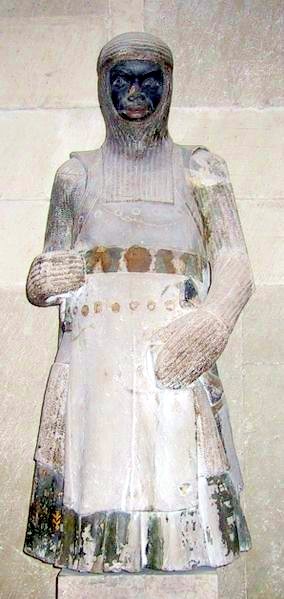
Veneration
Saint Maurice became a patron saint of the German Holy Roman Emperors. In 926, Henry the Fowler (919–936), even ceded the present Swiss canton of Aargau to the abbey, in return for Maurice's lance, sword and spurs. The sword and spurs of Saint Maurice were part of the regalia used at coronations of the Austro-Hungarian emperors until 1916, and among the most important insignia of the imperial throne (although the actual sword dates from the 12th Century). In addition, some of the emperors were anointed before the Altar of Saint Maurice at St. Peter's Basilica. In 929, Henry the Fowler held a royal court gathering (Reichsversammlung) at Magdeburg. At the same time the Mauritius Kloster in honor of Maurice was founded. In 961, Otto I, Holy Roman Emperor, was building and enriching Magdeburg Cathedral, which he intended for his own tomb. To that end,
in the year 961 of the Incarnation and in the 25th year of his reign, in the presence of all of the nobility, on the vigil of Christmas, the body of St. Maurice was conveyed to him at Regensburg along with the bodies of some of the saint's companions and portions of other saints. Having been sent to Magdeburg, these relics were received with great honour by a gathering of the entire populace of the city and of their fellow countrymen. They are still venerated there, to the salvation of the homeland.
Maurice is traditionally depicted in full armor, in Italy emblazoned with a red cross. In folk culture he has become connected with the legend of the Holy Lance, which he is supposed to have carried into battle; his name is engraved on the Holy Lance of Vienna, one of several relics claimed as the spear that pierced Jesus' side on the cross. Saint Maurice gives his name to the town St. Moritz as well as to numerous places called Saint-Maurice in French speaking countries. The Indian Ocean island state of Mauritius was named after Maurice, Prince of Orange, and not directly after Maurice himself.
Over 650 religious foundations dedicated to Saint Maurice can be found in France and other European countries. In Switzerland alone, seven churches or altars in Aargau, six in the Canton of Lucerne, four in the Canton of Solothurn, and one in Appenzell Innerrhoden can be found (in fact, his feast day is a cantonal holiday in Appenzell Innerrhoden).Particularly notable among these are the Church and Abbey of Saint-Maurice-en-Valais, the Church of Saint Moritz in the Engadin, and the Monastery Chapel of Einsiedeln Abbey, where his name continues to be greatly revered. Several orders of chivalry were established in his honor as well, including the Order of the Golden Fleece, Order of Saints Maurice and Lazarus, and the Order of Saint Maurice. Additionally, fifty-two towns and villages in France have been named in his honor.
Maurice was also the patron saint of a Catholic parish and church in the 9th Ward of New Orleans and including part of the town of Arabi in St. Bernard Parish. The church was constructed in 1856, but was devastated by the winds and flood waters of Hurricane Katrina on 29 August 2005; the copper-plated steeple was blown off the building. The church was subsequently deconsecrated in 2008, and the local diocese put it up for sale in 2011. By 2014, a local attorney had purchased the property for a local arts organization, after which the building served as both an arts venue and the worship space for a Baptist church that had been displaced following the hurricane.
On 19 July 1941, Pope Pius XII declared Saint Maurice to be patron Saint of the Italian Army's Alpini (mountain infantry corps). The Alpini have celebrated Maurice's feast every year since then.
The Synaxarium of the Coptic Orthodox Church of Alexandria does not mention Saint Maurice, although there are several Coptic churches named for him.
#african#deep reddish brown skin#north african#coptic#coptic orthodox#alexandria#catholic#roma#roman#gaul#saint maurice#moors#morr#moor#pope#pope pius xii#new orleans#south#south side#baptist#churc#church#egyptian#egypt#kemet#ta meri
206 notes
·
View notes
Photo
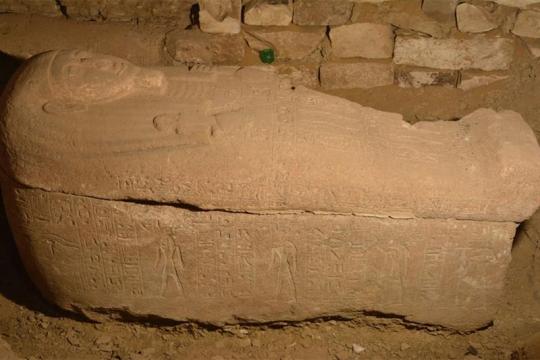

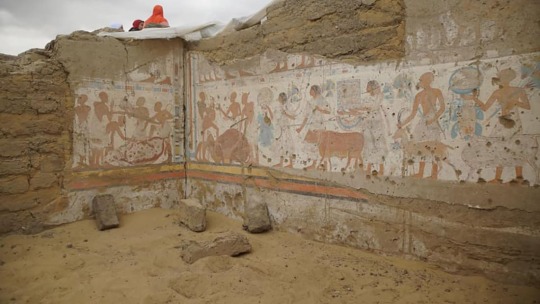
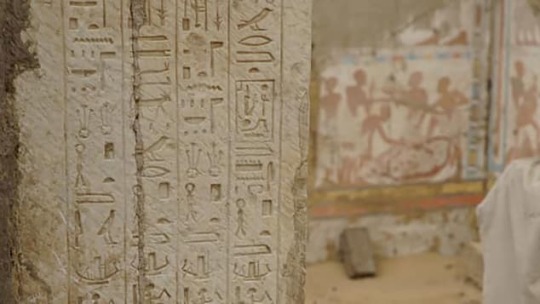
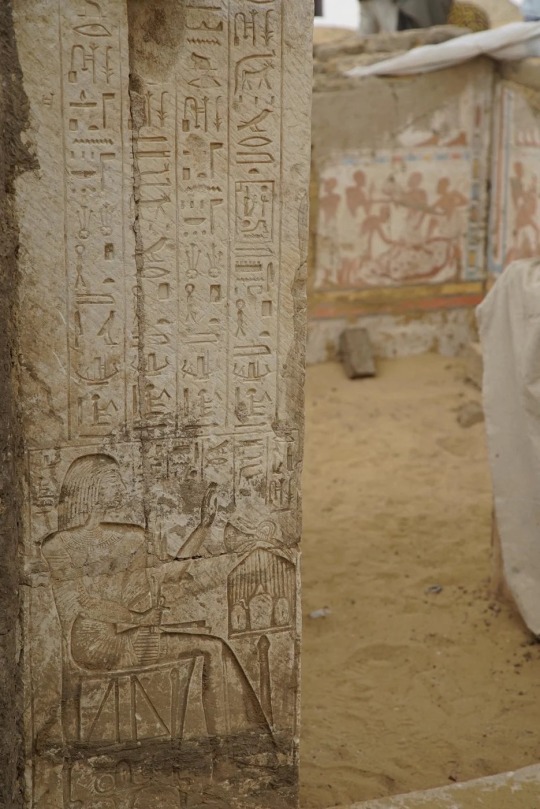
Sarcophagus of Ramses II’s Chief Treasurer Discovered at Saqqara
Egyptian archaeologists unearthed the empty, 3,200-year-old coffin of Ptah-M-Wia, a high-ranking New Kingdom official
Archaeologists in Egypt have unearthed the 3,300-year-old stone sarcophagus of an official whose mummified body was stolen by grave robbers long ago.
The coffin, carved from pink granite, was crafted for an official named "Ptah-im-wea," who, according to the hieroglyphs inscribed on it, lived during the time of Ramesses II (reign circa 1279 B.C. to 1213 B.C.) and managed a temple that Ramesses II had built at Thebes (modern-day Luxor).
The hieroglyphic inscription said that Ptah-im-wea supervised the temple's livestock, was head of the temple's treasury and was responsible "for the divine offerings to all the gods," according to a translated statement (opens in new tab) from the Egyptian Ministry of Tourism and Antiquities.
However, Ptah-im-wea wasn't buried near the temple he managed for Ramesses II. Instead, his coffin was placed beside a pyramid built 1,000 years earlier at Saqqara, an ancient city known for its vast necropolises.
Archaeologists discovered the sarcophagus near the pyramid of King Unas (reign circa 2353 B.C. to 2323 B.C.), south of a corridor where people ascended into the pyramid, the statement said. It was not unusual for people in ancient Egypt to want to be buried near pyramids constructed by pharaohs who lived in much earlier times, archaeological finds indicate. For instance, burials dating back around 2,500 years have been found near the Giza pyramids, which date to around 4,500 years ago, indicating that people may have considered the sites sacred long after they were built.
The coffin's hieroglyphs call for the protection of the deceased and have depictions of Horus, the falcon-headed god of the sky and son of the deities Osiris and Isis. Although the sarcophagus was robbed in antiquity, archaeologists found traces of resin that indicated a mummy had rested inside the coffin. The team didn't find any other artifacts with the coffin, according to the statement.
Ramesses II ruled Egypt at a time when its empire extended from modern-day Syria to modern-day Sudan. The coffin was found by an archaeological mission led by Ola El Aguizy, an Egyptology professor at Cairo University.
#Egypt#saqqara#Sarcophagus of Ramses II’s Chief Treasurer Discovered at Saqqara#archeology#archeolgst#ancient tomb#ancient grave#ancient sarcophagus#ancient artifacts#history#history news#ancient history#ancient culture#ancient civilizations#ancient egypt#egyptian history
116 notes
·
View notes
Text
First Doctor - Project: Blue Box

TV Stories
◆ An Unearthly Child
◆ The Daleks
◆ The Edge of Destruction
◆ Marco Polo
◆ The Keys of Marinus
◆ The Aztecs
◆ The Sensorites
◆ The Reign of Terror
◆ Planet of Giants
◆ The Dalek Invasion of Earth
◆ The Rescue
◆ The Romans
◆ The Web Planet
◆ The Crusade
◆ The Space Museum
◆ The Chase
◆ The Time Meddler
◆ Galaxy 4
◆ Mission to the Unknown
◆ The Myth Makers
◆ The Daleks’ Master Plan
◆ The Massacre
◆ The Ark
◆ The Celestial Toymaker
◆ The Gunfighters
◆ The Savages
◆ The War Machine
◆ The Smugglers
◆ The Tenth Planet
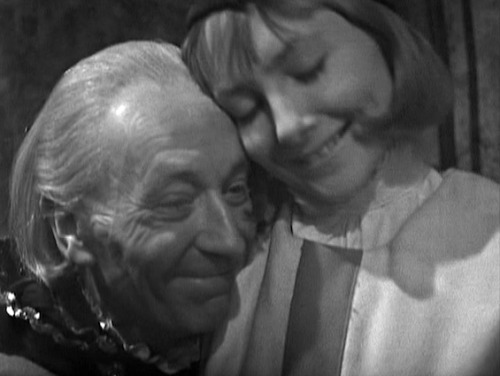
Audio Stories
- 1st Doctor Adventures
◆ The Destination Wars
◆ The Great White Hurricane
◆ The Invention of Death
◆ The Barbarians and the Samurai
◆ The Phoenicians
◆ Tick-Tock World
◆ Return to Skaro
◆ For the Glory of Urth
◆ The Hollow Crown
◆ The Outlaws
◆ The Miniaturist
◆ The Demon Song
◆ The Incherton Incident
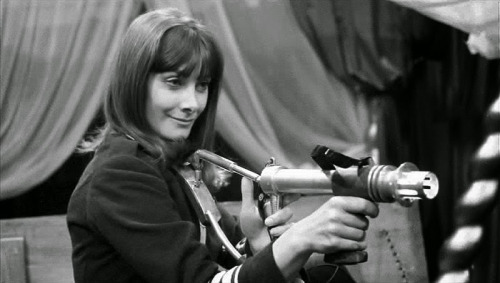
- The Companion Chronicles
◆ The Beginning
◆ The Sleeping Blood
◆ The Alchemists
◆ Quinnis
◆ The Transit of Venus
◆ The Library of Alexandria
◆ The Flames of Cadiz
◆ E is for…
◆ The Wanderer
◆ Here There Be Monsters
◆ The Revenants
◆ Starborn
◆ The Rocket Men
◆ The Sleeping City
◆ The Unwinding World
◆ Daybreak
◆ The Time Museum
◆ Frostfire
◆ Fields of Terror
◆ The Founding Fathers
◆ Across the Darkened City
◆ Upstairs
◆ The Suffering
◆ The Anachronauts
◆ The Home Truths
◆ The Drowned World
◆ The Guardian of the Solar System
◆ The Perpetual Bond
◆ The Cold Equations
◆ The First Wave
◆ The Vardan Invasion of Mirth
◆ Mother Russia
◆ Tales from the Vault
◆ Return of the Rocket Men
◆ The War to End All Wars
◆ The Bonfires of Vanities
◆ The Plague of Dreams
◆ The Crumbling Magician

- The Early Adventures
◆ The Age of Endurance
◆ Domain of the Voord
◆ After the Daleks
◆ The Fifth Traveler
◆ The Doctor’s Tale
◆ The Bounty of Ceres
◆ The Ravelli Conspiracy
◆ The Dalek Occupation of Winter
◆ An Ideal World
◆ Entanglement
◆ The Crash of UK-201
◆ Daughter of the Gods
◆ An Ordinary Life
◆ The Sontarans
◆ The Secrets of Det-Sen
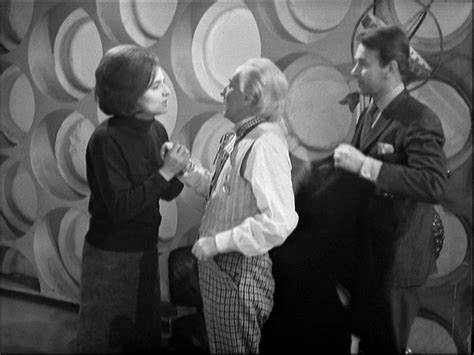
- The Lost Stories
◆ Farewell, Great Macedon
◆ The Fragile Yellow Arc of Fragance
◆ The Masters of Luxor
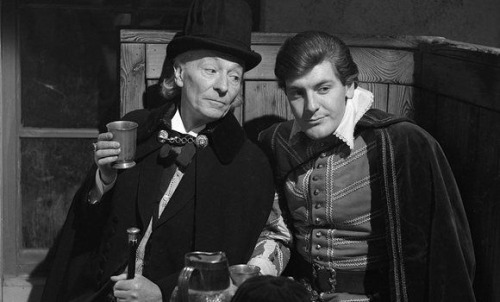
- Short Trips
◆ Rise and Fall
◆ A Star is Born
◆ A Small Semblance of Home
◆ Flywheel Revolution
◆ Home Again, Home Again
◆ 1963
◆ Etheria
◆ Helmstone
◆ O Tannenbaum
◆ Peace in Our Time
◆ Out of the Deep
◆ This Sporting Life
◆ The Horror at Bletchington Station
◆ Falling

Books
◆ The Sorcerer’s Apprentice
◆ The Empire of Glass
◆ The Man in the Velvet Mask
◆ The Plotters
◆ The Witch Hunters
◆ Salvation
◆ City at World’s End
◆ Bunker Soldiers
◆ Byzantium!
◆ Ten Little Aliens
◆ The Eleventh Tiger
◆ The Time Traveller
2 notes
·
View notes
Text
Murder of the Orient Express! Railway Lines Once Connected The Middle East. Now The Tracks That Joined Continents Lie in Wreckage
— December 18th 2021 | Medina, Oujda and Lydda | The Economist

She left her husband digging for pottery in Syria’s northern desert, handed her passport to the uniformed Turk at Nusaybin, and, as the steam whistle blew, clambered aboard the Express bound for Aleppo. On arrival, she checked into the Baron, the city’s only first-class hotel, and in room 203 began writing what is probably the most famous mystery novel of all time.
“It was five o’clock on a winter’s morning in Syria. Alongside the platform at Aleppo stood the train grandly designated in railway guides as the Taurus Express. It consisted of a kitchen and dining-car, a sleeping-car and two local coaches.” So Agatha Christie began “Murder on the Orient Express”. Set on the homeward leg of her journey through the Middle East, it conjures a lost world of interconnecting cabins, liveried conductors, embroidered handkerchiefs and passengers who dressed for dinner.
The victim is an American swindler stabbed a dozen times in his sleeper car. But though the tale made Christie the world’s best-selling novelist, it was a footnote compared to the crime unfolding around her—the dismemberment of the vast railway network that tied the Middle East together.
The passengers aboard the 0500 to Istanbul came from Baghdad, Kirkuk and Mosul. They might also have come from Khartoum, Alexandria, Jerusalem, Damascus and Basra. Maps from the time show a region criss-crossed with tracks. For the supposed “sick man of Europe”, the Ottoman empire in its last decades was remarkably energetic. In 1888, Sultan Abdelhamid II embarked on the most ambitious engineering project in six centuries of Ottoman rule, to link the four corners of his empire by rail.
Abdelhamid began with Islam’s holy sites. With the help of Christian and Jewish entrepreneurs, he cut a line from the Mediterranean through Judea’s limestone hills to Jerusalem. It deposited its first load of pilgrims opposite the al-Aqsa mosque in 1892. Eight years later, he commissioned a track 15 times longer linking Damascus, the traditional starting point of the haj, or Muslim pilgrimage, to Medina, where the Prophet Muhammad is buried. Completed in 1908, the line changed the pilgrimage from a perilous 40-day camel trek through Arabia’s deserts to a cushioned three-day ride. The Damascus terminal, renamed Allah’s Gate, was a showpiece of Islamic baroque.
From Morocco to Iraq Not a Single Train Crosses Borders
This construction accompanied other feats. In the empire’s twilight years, the sultans connected three booming Levantine ports—Tripoli, Beirut and Haifa—to ancient silk-road cities such as Damascus, Homs and Aleppo. On the eve of the first world war, the sultans allied with the German Kaiser to build a line from Berlin to Baghdad, bypassing Britain’s choke point, the Suez canal. German engineers helped bridge the Taurus mountains in the last weeks of the war—too late to reinforce fronts against the British pushing north.
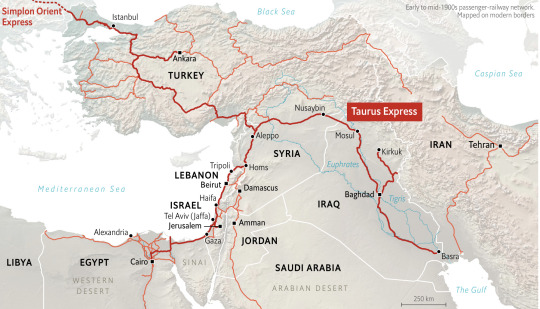
The European empires that overran the Middle East implemented much of what the Ottomans left on the drawing board. By the 1930s passengers could travel from the English channel to Cairo with only three changes of train. The last leg, in third class, cost the equivalent of about two days’ work for a labourer. It left Haifa daily at 0830, steamed south to the Mediterranean port of Gaza by lunchtime, turned west into Sinai and arrived in the Egyptian capital by 2230.
From there, travellers could continue aboard one of the first air-conditioned carriages along the Nile to Luxor’s Valley of the Kings and on to Sudan. “Direct and quickest route to Damascus, Beyrout, Baalbek and Aleppo,” read a Palestine Railways brochure advertising the connections from Haifa. Sami Abu Shehadeh, a Palestinian historian and member of the Israeli Knesset, or parliament, says that “from Jaffa station you could commute across the Arab world.”
The Suspects
The Middle East had been a cosmopolitan hotchpotch of languages, ethnicities and sects since civilisation began. The railroads tossed them together like fruit in a bowl. Christie’s 13 suspects were “of all classes and nationalities”. On these trains, Muslim pilgrims heading from Tulkarm shared carriages with Jewish workers on package holidays from Haifa to Damascus that were organised by the Zionist trade union, the Histadrut. The Lebanese tourist board competed by printing adverts for its ski resorts in Hebrew. As a child Mahmoud Zahar, a leader of the Palestinian Islamist movement, Hamas, remembers catching the sleeper from his mother’s hometown of Alexandria to Gaza. The staff were no less diverse. Jews and Arabs worked under British command at Palestine Railways, along with 30 other nationalities. On Christie’s Express, the conductor was a Frenchman.
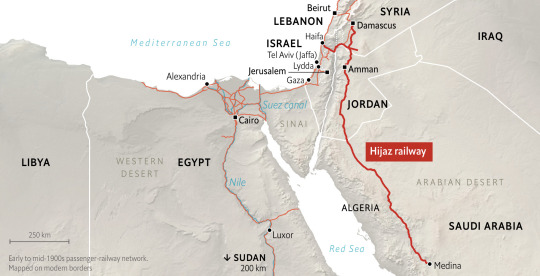
Seventy years later the tracks that joined continents lie in wreckage. From Morocco to Iraq not a single train crosses borders. Rusting carriages and engine hulks litter the sands. Cypress trees sprout between Lebanon’s lines. Rails were smelted into bullets like ploughshares into swords. Sleepers reinforced trench walls, and stations and repair yards became barracks and prisons. As in the murder on the Orient Express, the network fell victim to multiple blows. Tracing culpability is one of the region’s great whodunits.
The first suspect was another guest at the Baron, in the room next to Christie’s. For much of the first world war Thomas Edward Lawrence, a British intelligence officer, connived behind enemy lines to rupture the Hijaz railway to harry Ottoman troops. He raised a Bedouin band, fired them with jihadist zeal, blew up 79 bridges and derailed dozens of trains. Back home “Lawrence of Arabia” was a hero. His tactics were those of a terrorist. The wounded, many of them civilians, were left to die in the gorges. “This killing and killing of Turks is horrible,” Lawrence wrote in a letter home.
That said, the British have alibis. They built railways in the Middle East before and after the Ottomans. Robert Stephenson, an English pioneer of the steam train, began laying Egypt’s tracks in the 1850s. As British troops advanced they extended the lines.
The investigation into Lawrence reveals other leads. Many of his Bedouin recruits hated the Hijaz line for breaking their monopoly on transporting pilgrims and grain. “Jahash al-Sultan,” they called it, the Sultan’s donkey. It brought foreign mores, too, that disturbed time-honoured codes. Under the puritanical Al Saud dynasty, the Bedouin ripped up tracks from their new border to Medina. Follow the line south of Jordan today and for almost 800km all that remains is the naked embankment snaking past rust-coloured mountains. In places, wind-swept Ottoman stations and forts wait for a train that last passed a century ago.
Yet the Saudis also have alibis. Once the Bedouin carved out his kingdom, King Abdelaziz Ibn Saud slaughtered them in their hundreds. The Saudis point to other beneficiaries from the Bedouin assaults. Britain and France had long sought ways to interrupt the flow of their Muslim subjects to Mecca and limit their exposure to anti-colonial Islamists.
Zionists could also be found at the crime scene. The more militant considered Britain’s railways an iron spider’s web ensnaring their land, and they killed scores in dozens of attacks. On the “Night of the Trains”, on November 1st 1945, the three main Zionist militias blew up the lines at more than 150 points and planted bombs in the stations at Jerusalem and Lydda junction. Seven months later, a “Night of the Bridges” destroyed ten bridges connecting Palestine’s railways and roads to the Arab world. A website honouring the fighters of the Irgun, the militia headed by a future prime minister, Menachem Begin, still hails the achievement: “The operation achieved its objective, and the country was cut off from all its neighbours.”
The dismantlement continued with Israel’s independence in 1948. Israel blew up the bridge at Rosh HaNikra to cut off Beirut and plugged the tunnel through the South Lebanon hills, severing the line that linked Europe to Africa. The Israeli government also dissolved the Palestine Railway Company and dismissed many non-Jewish workers. After the 1967 war Israel abandoned the Ottoman lines in the West Bank, used Sinai’s tracks to fortify its Bar Lev defences along the Suez canal and locked Gaza—the old crossroads between continents—behind turrets and walls.
But the Israelis also have alibis. Had they not broken the lines, they say, the Arabs would have smuggled arms and men to destroy them. The Israelis argue that it was Arabs who undid the network. Palestinian militants targeted rail infrastructure during their revolt against the British in the 1930s. And with self-destructive zeal, Palestinians ripped up the last of Gaza’s rails to make tunnels and rockets.
Regional conflicts and civil wars finished the victim off. The French controlled their North African holdings with railways fanning out from Algiers. But after independence Morocco and Algeria battled over Western Sahara, and in 1994 the trans-Maghreb train to Tunis stopped 1,300km short. Two border towns, Oujda and Maghnia, face each other, united by ethnicity, religion, language and intermarriage but divided by army barricades. Their stations, once trading posts, are terminals. “Halte police,” read the no-entry signs. Peacocks pick at rubbish between the lines.

How It Was Once Possible To Cross the Middle East By Train
The last train left Tripoli for Beirut at the start of Lebanon’s civil war in 1975. Syria’s invading forces converted Rayak, the big junction and repair centre near its border, into a military base and turned an adjacent hotel into torture chambers. Israel’s offensive in 1982 finished off what remained of the line to Beirut.
For years, Agatha Christie’s Express was the stubborn survivor. The leg to Baghdad folded in the 1980s, but the night train from Aleppo to Turkey limped on. Then came Syria’s civil war in 2011. It terminated all but a fraction of Syria’s 2,450km of track. The platform still stands in Aleppo where Christie’s “Murder” began, but her route east to Iraq was damaged in the bombardment of Islamic State. Mosul station was destroyed. The Arab Union of Railways dissolved in 2016. After a spate of mortar attacks, Christie’s writing retreat, the Baron hotel, shut its doors in 2014.
Like the 12 killers aboard the Orient Express, the region’s rulers each had a motive. The colonial powers carved up the Middle East. The generals who succeeded them prioritised their parcels of territory over the common market and culture developed across millennia. Tinpot dictators saw cosmopolitanism and connectivity as threats to new national identities. Religion lost its universality and shrank into cults tied to plots of land. Syria expelled its French inspectors. Iraq’s railway administration sacked its Jewish managers. Bereft of expertise, many lines fell into disrepair. Train lines became like ancient silk-road souqs and bazaars, relics of a past when riches came from regional trade rather than the rent of a single raw material, be it oil, gas or phosphates. Defence came not from neighbourly relations but from a superpower far away.

The new love was the motor car. In 2019 Egypt paved over its Victorian tramway between downtown Cairo and the suburb of Heliopolis. To cover their tracks, the culprits gentrified the ruins. In 2014 hipsters turned Beirut’s Mar Mikhael station into a bar. Israel converted the old terminals in Jaffa and Jerusalem into nightclubs and swanky restaurants. With a nostalgic nod, each makeover sends the message that the original use had reached the end of the line.
The Verdict
Christie’s novel ends when the crime is solved. The story of the Middle East, though, never ends. As the oil age draws to a close, there are signs the region is rediscovering the value of its old connections. Many states plan to diversify their economies towards trade and industries such as tourism. Rulers worry they can no longer rely on America and are investing in regional diplomacy. And after the horrors of sectarian bloodletting, identity politics is losing its currency. Governments and political movements are cautiously rediscovering the benefits of religious multiplicity. Jewish communities are sprouting across the Middle East. Israel has its first Muslim party in government.
In tandem, railway branches are reaching outwards again. Morocco opened the region’s first high-speed network in 2018, with plans to extend it to west Africa within 20 years. “With access and movement comes trade,” says Muhammad Rabie Khilie, the head of Morocco’s rails. “It’s the spinal cord of development.” A century after the Saudis smashed the Hijaz line, trains with cars built in Spain race between the holy cities at 300km/hr. A line to Jordan’s border should open in March, seemingly preparing for the day of peace when via Israel passengers can reach the Mediterranean.
Harbouring similar hopes, Israel is building four lines, stretching tantalisingly eastward. If the Chinese company operating the Haifa container terminal has its way, at least one line will extend China’s belt-and-road via Jordan. Competing for influence, Iran says it has agreed with Iraq to fill the 32km gap in its railway to southern Iraq, also with Chinese help, and from there along the old silk road to Syria. In October Iraq reopened the line to Mosul and announced plans to push on to Turkey. There are plans for lines linking the Arab states along the Gulf. Egypt is pursuing a massive expansion, which includes the world’s largest monorail and new lines to Libya, Sudan and Saudi Arabia. Unlike Christie’s American swindler, the Orient and Taurus Express trains, and with them the Levantine dream, may yet ride the railways again. ■
— Photographs: Getty Images, Alamy
2 notes
·
View notes
Text
Pharaoh taharqa statue

Taharqa was buried at Nuri – North Sudan. Taharqa died in the city of Thebes in 664 BC and was succeeded by his appointed successor Tantamani, a son of Shabaka. Esarhaddon then proceeded to invade Egypt proper in Taharqa’s 17th regnal year, after Esarhaddon had settled a revolt at Ashkelon. His first attack in 677 BC, aimed to pacify Arab tribes around the Dead Sea, led him as far as the Brook of Egypt. It was during his reign that Egypt’s enemy Assyria at last invaded Egypt. Esarhaddon led several campaigns against Taharqa, which he recorded on several monuments. Taharqa took full advantage of the lull in fighting and abundant harvest. In the sixth year of Taharqa’s reign, prosperity was also aided by abundant rainfall and a large harvest. He is one of the few Pharaoh’s mentioned in the bible.ĭuring his reign internal Egypt was one of peace and prosperity, the empire flourished. At the request of Hezekiah King of Israel’s, Taharqa and the Egyptian/Kushite army managed to stall the Assyrian advance on Jerusalem, the capital of Ancient Israel. When Taharqa was about 20 years old, he participated in a historic battle with the Assyrian Emperor, King Sennacherib at Eltekeh. Evidence for the dates of his reign is derived from the Serapeum stela, catalog number 192.Īlthough Taharqa’s reign was filled with conflict with the Assyrians, it was also a prosperous renaissance period in Egypt and Kush. Taharqa’s reign can be dated from 690 BC to 664 BC. Taharqa was also the cousin and successor of Shebitku. Shabaka continued his familys project of religious restoration, adding on to Amuns great temple at Karnak, as well as sanctuaries at Luxor and Medinet Habu. Taharqa was the son of Piye, the Nubian king of Napata who had first conquered Egypt. Piye was succeeded as pharaoh and king of Kush by his brother, Shabaka (ruled c. Taharqa was the sovereigns of the Ancient Egyptian 25th dynasty – The Nubian Dynasty- and monarch of the Kingdom of Kush, which was located in what is now modern day Northern Sudan. Provided by an Albawaba.Source: Wikimedia Commons Neithsabes (travail personnel / Minolta DiMAGE Xt) History," she said, adding more digs were being planned in the "The world is discovering Sudan and its fantastic and exciting Sudan in the British Museum, said working in Sudan was "incrediblyĮxciting" because so little had been excavated. Some 300 km south (by Nile) of the previously known Kushite royal site.Īnderson, assistant keeper in the Department of Ancient Egypt and to the 6th century B.C." he told Reuters, adding the site was "These statues belong to kings from between the 8th centuryī.B. Than its better known neighbor Egypt and more were being discovered This was a period of Kushite rule, which means that Taharqa and his fellow rulers were from Nubia and drew their power-base from there. Taharqa was a pharaoh of the 25th dynasty of Egypt. Salah Mohamed Ahmed, Director of Fieldwork in the NationalĬorporation for Antiquities and Museums, said Sudan had more pyramids Archaeologists have found a massive one ton granite statue of the Egyptian pharaoh Taharqa has been found in Dangeil, deep inside Sudan. Trade routes, the waters of the river Nile, gold and agriculture. The Kushite empire ruled for so long because it had control of The names of the kings were written in hieroglyphics on the backs Pharaoh who came south to assert authority. Which may have been due to internal dynastic disputes or an Egyptian Have been deliberately broken at the neck, knees and ankles in a ritual,

The granite life-size statues would weigh 1.5 tons but appeared to Well as part of a crown of a fourth royal who they have yet to identify. The dig found four royal statues, of Pharaoh Taharqa (690-664ī.C.), kings Senkamanisken (643-623 B.C.) and Aspelta (593-568 B.C.) as "This is the furthest south that we know of that a statue of "It's an amazing shock that we'veįound the statues there particularly Taharqa," said Julie Anderson,Ĭo-director of the project in Dangail, about 350 km (217.5 miles) north The Kushite civilisation survived from 9th century B.C. The Pharaoh Taharqa, mentioned in the Bible for saving Jerusalemįrom the Assyrians, was a Kushite from north Sudan but ruled a wideĮmpire through Egypt to the borders of Palestine. The expansive Kushite empire extended, the dig directors said on Monday. In Sudan, a discovery that has shocked archaeologists at how far south Huge granite statues of a pharaoh and other kings have been found Summary: Huge granite statues of a pharaoh and other kings haveīeen found in Sudan, a discovery that has shocked archaeologists at howįar south the expansive Kushite empire extended, the dig directors said
APA style: Pharaoh and king statues found in Sudan.
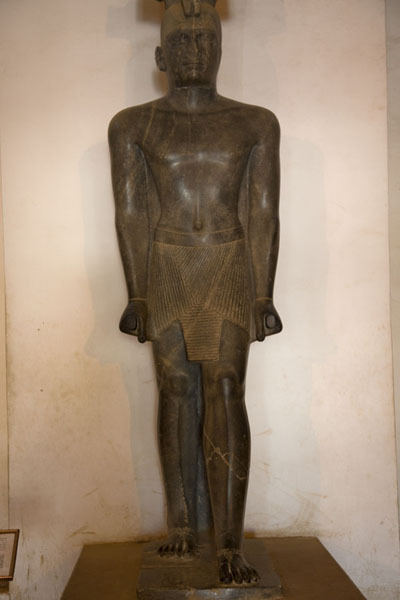
Pharaoh and king statues found in Sudan." Retrieved from
MLA style: "Pharaoh and king statues found in Sudan." The Free Library.

2 notes
·
View notes
Text
Paris Experiences: numéro un
Jardin des Tuileries
This garden began construction under the direction of Queen Catherine de Médici in the 16th century, and experienced redesign, as well as the impact of the revolution. It was set aflame during the 1871 uprisings, which further opened the park into what is known as the “Triumphal way.” The garden serves as the axis point for many great monuments and symbols of empire and French glory. At the east end is the Louvre, then the Arc de Triomphe du Carrousel, followed by the Luxor Obelist, and the Grande Arche de La Défense towards the west.
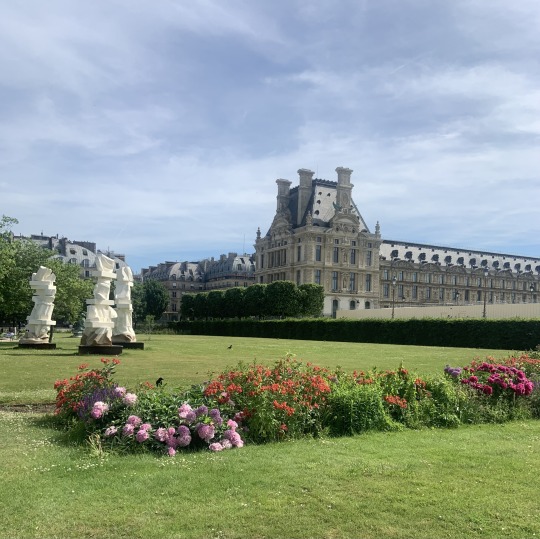
At first, this garden served the royals and nobility, but through the years, and because of the revolutions, it is now the property of the people, and open for everyone to enjoy. As I mentioned before, conflict and destruction in 1871 actually helped to make the park as broad and clear as it is today.

The park itself now contains two fountain pools, rows of square trees, a small carousel and trampoline park, shaped shrubbery, and dozens of statues and sculptures. Most of the ground is covered in gravel walkways, perfectly green grass, and flower beds filled with roses, peonies, irises, and other tall flower varieties.

Chartreuse metal chairs surround the fountains and sit under the shade of trees. Some of them are permanently reclined and include wooden cup holders. They are usually filled with people sunbathing, reading, or chatting. You will have to be quick to snag one on a beautiful Spring or Summer day. The grass is off-limits, with low metal fencing designating it as a no walking zone, but there are also benches under some of the carefully maintained tree rows. There are also food stands including gelato and other treats throughout the area. Most of the garden is surrounded by a stone wall, which means you need steps to exit it, and gives it a somewhat intimate “sunken garden” feeling.


I entered the garden from the East end, after walking under the Arc de Triomphe du Carrousel and walking down the wide gravel paved walkway. The sun was bright and strong, and I noticed the prime real estate that shade was. Many people were simply seated around the fountains talking, many others were purposefully taking walks or jogs through the park. You could hear the echo of schoolchildren’s laughter in the distance. The further we got from the Louvre, the calmer the park became, although there was a constant stream of people walking in both directions.


The space filled me with contentment and a good dose of sunshine. By walking through the park both from East to West and also North to South, you can find an area that suits your activity or preference. The rows of trees provide shade, and the chairs around the fountain are a great spot to read, people watch or chat with friends. The statues throughout the park reminded me of the history of the space, and the royal intentions it was created with. Leave it to the great Catherine de Médici to conceive of a stunning park like this.
Sources: Walking Paris: The Best of the City, National Geographic
2 notes
·
View notes
Text
Han pensado esto ?????........ yo claudio soy realeza quiere decir soy super multimillonario.........
Mi gran hobby son las mega mansiones.......... costanera center.......... hyatt y marriot............ pero hay una sorpresa............empire state y crysler........... luxor..........bellagio.......... cesar palace.........
Mclaren Mercedes........... Ferrari red bulls........... alpha romeo alpha tauri........... aston Martin William......... hass alpine....
Sony y Samsung........... microsof y apple.....
Cartier y tifanny.....
Channel.....
Nike y adidas.....
Air france y american Airlines y united airlines........
Chicago bulls y los angeles lakers.......... yankis de new york y gigantes de san francisco.......... Kansas city y san francisco.....

0 notes
Text
2 notes
·
View notes
Photo

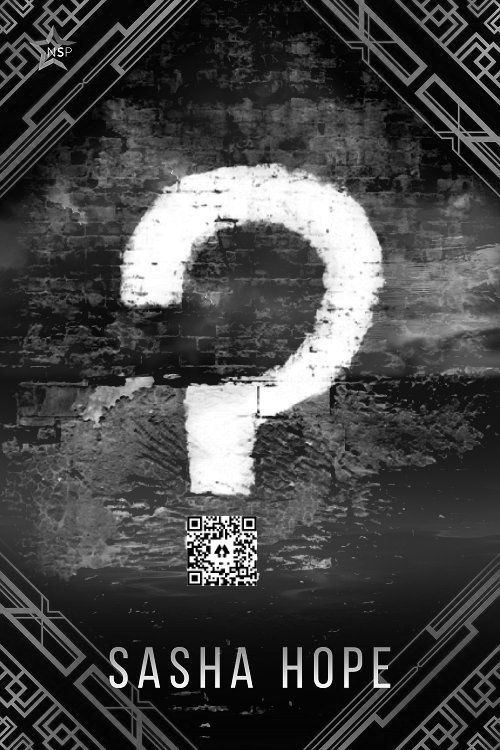

Got edits back from my editor twice now during NaNoWriMo 😅 lord works fast but my editor works faster...gotta work on this next book~!
ANYWAY I really haven’t talked much about it yet! My next story set in the @the-empires-of-luxor-city universe is called BORDERS BETWEEN EMPIRES. It’s very much an omegaverse cops and robbers vibe. I like that I get to expand more on the relationship between the Central and Southern Empires and introduce Hanni and Jaemin as the new star couple 🔥❤️
Like the THE EMPIRES OF LUXOR CITY and BETWEEN EMPIRES AND CONTINENTS it’ll be a stand alone story set in the same universe with some new characters and some familiar faces! I can’t wait to share more about it soon!
5 notes
·
View notes
Text
#LGBTQIA+#paranormal#romance#booklover#bookblogger#bookaddict#romancereadersofinstagram#booknerd#bookworm
0 notes
Text
EGYPT, JORDAN AND HOLY LAND CHRISTMAS HOLIDAYS
EGYPT, JORDAN AND HOLY LAND CHRISTMAS HOLIDAYS
Jordan and Holy Land Christmas Holidays, Explore Egypt and Jordan Tours . Visit the city of Petra at Jordan with Camels in the doorway of the Treasury at Petra, Jordan, shows the enormity of the ancient building's entrance. Carved into the sandstone hill by the Nabataeans in the second century AD. This towering structure likely began as a temple .One of the most impressive sights. Wadi Rum Desert and experience a lot of activities there.
Egypt and Jordan tours in new year,take your flight to Amman, the capital and largest city of Jordan, and the country's economic, political, and cultural center. Jordan has the many attractions to discover like Mountain of Nebo which is a place of high significance, visit the tomb of Moses and the top of the hill where you'll find the viewing platform, Moses Memorial Church. Second is Madaba which is one of the top travel destinations in Jordan and best known for artistic beauty. Adorned with mosaics from the Byzantine Empire and don’t forget to visit St. George’s Church in Madaba. Dead Sea Tours you will live the best experience in your destination for your relaxation, Dead Sea is the lowest land based elevation on Earth and the seventh saltiest body of water on Earth, enjoy natural health and the beauty.
Enjoy your Christmas Tour Packages in Egypt Jordan and the Holy land, travel to the best countries in the Middle East with World Tour Advice, and visit Giza Pyramids, Petra, and Jerusalem
Itinerary
Day 1 Arrival
Meet and assist service by world tour advice representative upon your arrival to Cairo airport, drive by modern Ac van to hotel in Cairo. Overnight in Cairo
Day 2 Pyramids and museum tour
Breakfast in hotel, meet your professional tour guide, drive to Giza pyramids to visit the famous pyramids of Khufu Khafre and Mankarah, then the mysterious sphinx and the valley temple, lunch meal, shopping tour, proceed to the Egyptian museum in Cairo, after the museum tour free time for oprional tour to attend Soun and light show, back to hotel. Overnight in Cairo
Day 3 Saqqara and Memphis tours
Enjoy your breakfast, meet your tour guide, visit Saqqara and Memphis, lunch meal included, drive to Cairo airport to fly to Aswan, upon arrival to Aswan meet world tour advice representative and check in your hotel in Aswan
Day 4 Abu Simbels tour
Early morning take your breakfast take away and join our tours to visit the great temples of Abu Simbel, the temples are belonging to Ramssess II and his wife queen Nefertari, after the tour, lunch meal and drive to Aswan ( 3 hours )
Overnight in Aswan
Day 5 Aswan Tours
Breakfast, check out, tour to the high dam, the unfinished obelisk and Filae temple, the botanic garden, lunch meal and drive to Luxor, Check in your hotel in Luxor
Overnight in Luxor
Day 6 Luxor East bank tours
Breakfast, meet your tour guide, tours to Karnak and Luxor temples, lunch meal at local restaurant, back to hotel, free time for leisure and optional tours
Overnight in Luxor
Day 7 Luxor West bank
Breakfast, meet your guide, tours to Western bank where you will visit the valley of kings, Habu temple, Memnon Colossi, Hatshepsut temple, lunch meal drive to airport fly to Sharm El Sheikh, upon arrival to Sharm airport transfer to your hotel, Overnight in Sharm
Day 8 Sharm optiona tours
Sharm all'inclusive hotel, free time for leisure and optional tours
Day 9 Saint Catherine tour
Enjoy your breakfast, drive accompanied by your tour guide to Saint Catherine monastery, the holy land where is located Moses mount is just few minutes from the holy monastery, lunch meal, back to Sharm hotel
Overnight in Sharm
Day 10 Free day for leisure in Sharm
Enjoy free day for leisure and optional tours, Dont forget to ask your hotel reception to prepare Box breakfast for your next day tour
Overnight in Sharm
Day 11 From Sharm to Jordan, Petra
Meet world tour advice tour representative at your hotel in
Sharm El Sheikh, then direct transfer by air-conditioned van class to Taba Border, it is about 2 and half hours driving.
Then other transfer from Taba border to Arava Border, then cross to the borders to arrive Jordan, then you will meet other World tour advice representative who will assist you through immigration and then drive from Aqaba to Petra . Along the way you will stop to explore Wadi Rum, where you will enjoy an exhilarating 4X4 ride visiting the Wadi Um Eshreen, the Moving Sand, Al Khazali, Abu Aineh and Rum Mountain. We will see the trail of Lawrence of Arabia and the famous Red Mountains. Afterwards we proceed north
to the spectacular lost city of Petra. Overnight in Petra.
Day 12 Petra tour, then Amman
Enjoy your breakfast, enjoy guided tour in Petra the pink lost city, lunch meal, drive to Amman
Overnight in Amman
Day 13 From Amman to Jerusalem
At 6:30 am meet world tour representative at your hotel, drive to the Allenby Bridge/King Hussein Border to leave Jordan.
Your tour guide welcomes you, then drive via the Judean desert to the Holy City Jerusalem. Your first thing to see will be a fantastic
panoramic view from the Mount of Olives, then walking tours down to the Garden of Gethsemane, tour to the Church of All Nations.
proceed tour to the old city where you will see the Wailing Wall, which represents the last remnants of the Jewish Temple, destroyed by the Romans. If open to visitors, You will ascend to the Temple Mount to look at the famous Dome of the Rock. Then proceed tour to the Via Dolorosa, which leads us to the Church of the Holy Sepulchre, where Jesus Christ was crucified and buried. return to Amman. Overnight in hotel in Amman.
Day 14 Amman city tour
Breakfast, meet world tour advice representative, Tour to Amman best sightseeing, the Roman theatere, the Archaeological museum, the mosque of king Abdullah, back to hotel
Overnight in Amman
Day 15 Jerash Tour and Fly home
Breakfast, drive to Jerash, which is the best example of Roman province in all Middle East, Nymphaeum, North theatre, Artemis temple, St. Cosmos and Demeanors church, south theatre, return to Amman , drive to Alia queen airport to fly home
Included
Meet and assist service by World tour advice representative at all airports
Assistance of our tour representatives at all hotels during Pick up time
All the tours transfers will be by modern Air conditioned van
Accommodation 2 nights in Cairo 5 stars hotel ( B.B)
Accommodation 2 nights in Aswan 5 stars hotel ( B.B)
Accommodation 2 nights in Luxor 5 stars hotel ( B.B)
Accommodation 4 nights in Sharm 5 stars hotel ( All\'inclusive)
Accommodation 2 nights in Petra 4 stars hotel ( B.B)
Accommodation 2 nights in Amman 4 stars hotel ( B.B)
Flight tickets from Cairo to Aswan and from Aswan to Sharm
All Cairo sites tours are private guided tours
All Tours in Luxor and Aswan are private guided tours
Tours as mentioned in our tour itinerary in Cairo, Luxor, Aswan, Sharm , Petra, Amman and Jerusalem
Entrance fees to all the sites mentioned in the itinerary
Spot English local tour guide in Petra ( 2- 3 hours )
English speaking driver during Amman day tour
Spot English tour guide in Jerash
English speaking tour guide during the tour in Jerusalem
About 2 hours driving in Wadi Rum by 4x4
Lunch meals will be included during Egypt day tours in Cairo, Aswan, Luxor and Sharm
All the travel package taxes
Excluded
Egypt Visa
International Flights
Tipping
For more info
· Website
· https://www.worldtouradvice.com/
· Mobile and what’s App:
· 002 01090023837
#EGYPT#JORDAN AND HOLY LAND CHRISTMAS HOLIDAYS#Egypt#Jordan and Holy Land Christmas Holidays#egypt ad jordan tous in new year#christmas packages to egypt and holy land#jordan and holy land tours in new year#new year holidays in egypt#Egypt New Year Packages
0 notes
Text
Egypt Escapade: Immerse Yourself in Culture and History with Our Tour Package
Are you ready to embark on a journey that will transport you back in time to ancient civilizations, while also allowing you to experience the vibrant culture of today? Look no further than our exclusive Egypt tour packages. From the iconic pyramids to the bustling bazaars, Egypt offers a captivating blend of history and modernity. Let us be your guide on this unforgettable escapade as we explore the wonders of this enchanting land.

Unveiling the Mysteries of the Pyramids
No trip to Egypt is complete without a visit to the awe-inspiring pyramids. These ancient structures stand as a testament to the incredible architectural prowess of the Egyptians. Gaze in wonder at the Great Pyramid of Giza, the last remaining wonder of the ancient world. With our Egypt tour package, you'll have the opportunity to not only marvel at these colossal structures from the outside but also venture inside to discover the hidden chambers and corridors that have fascinated historians and explorers for centuries.
Sailing the Nile: A Journey Through Time
The Nile River, often referred to as the lifeblood of Egypt, has played a vital role in shaping the country's civilization. Our tour package includes a relaxing cruise along the Nile, where you can witness the picturesque landscapes and traditional villages that line its shores. As you glide on the tranquil waters, you'll gain insight into the daily lives of the people who call this region home. It's a chance to connect with the local culture and appreciate the timeless beauty that surrounds you.
Bazaars and Beyond: Immerse Yourself in Egyptian Culture
The bustling markets and bazaars of Egypt offer a sensory overload that's not to be missed. Our Egypt tour package takes you through the colorful alleys of these markets, where you can haggle for unique handicrafts, exquisite jewelry, and aromatic spices. Engage with local artisans and traders, and let the rich tapestry of Egyptian culture envelop you.
Preserving the Past: Exploring Ancient Temples
Egypt is adorned with magnificent temples that honor various gods and pharaohs. With our expert guides, you'll explore these architectural marvels, such as the Karnak Temple and Luxor Temple, and learn about the religious and cultural significance they hold. The intricate carvings and towering columns will transport you to a time when these temples were at the heart of a powerful empire.
The Timeless Allure of Cairo
No Egypt tour is complete without a visit to Cairo, the vibrant capital city that bridges the gap between the past and the present. Explore the Egyptian Museum, home to a vast collection of artifacts, including the treasures of Tutankhamun. And, of course, a trip to Cairo wouldn't be the same without navigating the chaotic yet captivating streets, where you can savor local cuisine and witness the dynamic rhythm of urban life.
Book Your Egypt Tour Package Today
If the allure of ancient history, captivating culture, and breathtaking landscapes beckons you, our Egypt tour package is your gateway to an unforgettable adventure. Immerse yourself in the mysteries of the pyramids, cruise the timeless Nile, and embrace the vibrant tapestry of Egyptian life. Book your journey today and let us guide you through an Egypt escapade like no other.
Must Read : Experience the Best of Australia: Tailored Tour Packages for Your Dream Vacation
0 notes
Text
Human civilization is ancient, and over the centuries, various cities have emerged, grown, and flourished. Some of these cities have withstood the test of time and have been continuously inhabited for thousands of years. These cities are known as the oldest cities in the world, and they bear witness to the rich history and culture of humanity.
One of the oldest cities in the world is Jericho, which is located in the Palestinian territories. Archaeological excavations have shown that the city was inhabited as early as 8000 BCE. Jericho is also believed to be the oldest walled city in the world, with walls that date back to around 8000 BCE. The city is mentioned in the Bible, and it has played a significant role in the history of the region.
Another ancient city is Aleppo, located in Syria. Aleppo has a rich history that dates back to the second millennium BCE. The city was an important commercial center during the Silk Road era, and it has been conquered and ruled by various civilizations, including the Greeks, Romans, Byzantines, and Ottomans. Aleppo was also an important center of Islamic culture, and its old town, which is a UNESCO World Heritage Site, is a testament to the city's rich cultural heritage.
Athens, Greece, is another ancient city that has played a significant role in the history of Western civilization. Athens was founded in the 5th century BCE and became the capital of the powerful Athenian empire. The city is known for its many historic landmarks, including the Acropolis, the Parthenon, and the Temple of Olympian Zeus. Athens was also a center of learning and philosophy, and it was home to many famous philosophers, such as Plato, Aristotle, and Socrates.
In Egypt, the city of Luxor is another ancient city that has stood the test of time. Luxor is located on the site of the ancient city of Thebes, which was the capital of Egypt during the New Kingdom period. The city is home to many ancient Egyptian temples, such as the Temple of Karnak and the Temple of Luxor, which attract millions of tourists every year. Luxor is also known for its Valley of the Kings, where many pharaohs, including Tutankhamun, were buried.
Finally, we have Damascus, Syria, one of the oldest continuously inhabited cities in the world. Damascus was founded in the 3rd millennium BCE and has been inhabited ever since. The city has played a significant role in the history of the region, and it has been ruled by various civilizations, including the Persians, Greeks, Romans, and Ottomans. Damascus is also an important center of Islamic culture, and it is home to many historic landmarks, such as the Umayyad Mosque and the old city, which is a UNESCO World Heritage Site.
In conclusion, the oldest cities in the world bear witness to the rich history and culture of humanity. They have withstood the test of time and are still inhabited today, thousands of years after their founding. These cities are a testament to the resilience and endurance of human civilization, and they remind us of our shared history and heritage.
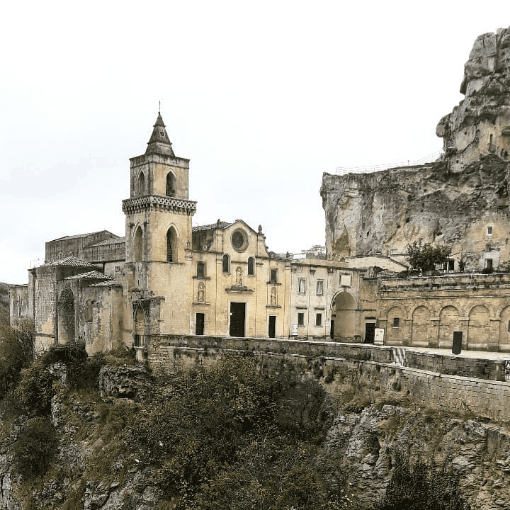
0 notes
Text
Luxor Dendera Private Tour El Gouna
Luxor Dendera Private Tour El Gouna
Luxor Dendera Private Tour El Gouna is an enjoyable Individual trip to Dendera & Luxor from El Gouna, Red Sea Governorate-Egypt! We recommend the trip because it allows tourists to see attractions in two cities – Dendera and Luxor. These monuments date back to two eras of Egyptian history – Ancient Egypt and the Roman Empire. It gives you significant joy and learning more about the country’s…
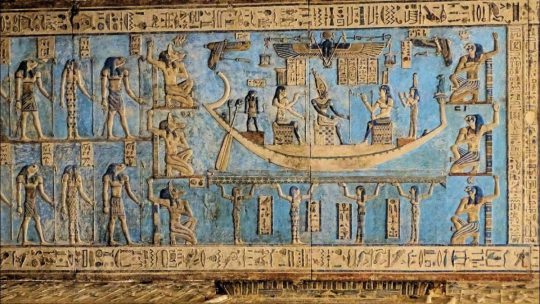
View On WordPress
0 notes